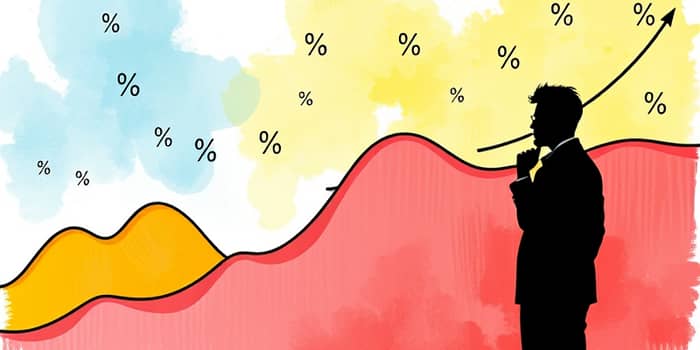
In the second half of 2025, bond investors face an increasingly turbulent environment that demands careful analysis and strategic planning.
The bond market is experiencing ongoing volatility as investors navigate evolving economic policies. After a significant spike in April 2025, the MOVE Index highlighted a resurgence of uncertainty. At the same time, yields on 30-year U.S. Treasury bonds pushed above 5%, the highest since 2007, as concerns over government spending and rising debt levels intensified.
These fluctuations underline the crucial role of inflation expectations in driving market dynamics. When traders anticipate price increases, they demand adjustments in yields to safeguard purchasing power. Recognizing this interplay is the first step toward building resilience in a portfolio.
Inflation expectations serve as a cornerstone of bond pricing. When markets expect prices to rise, investors demand higher yields to compensate for diminished real returns. Recent Consumer Price Index data for April 2025 recorded a monthly increase of 0.2% and a 12-month rate of 2.3%—the lowest since February 2021. Yet core inflation, excluding food and energy, remains stubborn at 2.8%.
Adding complexity, the Federal Reserve’s Survey of Consumer Expectations revealed that one-year inflation expectations dipped to 3.3% in April, while three-year forecasts rose to 3.2%. These mixed signals from key inflation indicators reflect ongoing uncertainty about future price pressures.
The shape of the yield curve provides vital clues about market sentiment and economic prospects. A steepening yield curve, in which long-term yields rise relative to short-term yields, indicates that investors require more compensation for committing money over an extended period amid uncertainty.
Short-term rates are largely determined by central banks, like the Federal Reserve, while long-term rates and inflation expectations emerge from market forces. If the central bank’s policy is perceived as too accommodative, inflation forecasts climb, pushing long-term yields higher and steepening the curve.
Treasury Inflation-Protected Securities, or TIPS, offer a built-in hedge against inflation by adjusting principal value based on changes in the Consumer Price Index. As of August 2024, the 10-year TIPS market anticipated average inflation of just under 2.1% over the next decade, aligning with the Fed’s long-term target.
While regular Treasuries have shown significant swings, TIPS yields have remained relatively stable, reflecting their role as a reliable hedge. The breakeven inflation rate—the difference between regular Treasury yields and TIPS yields—provides a useful market-based forecast for inflationary trends.
Higher long-term yields are not confined to the U.S.; similar patterns have emerged across developed economies, driven by global concerns about government deficits and policy uncertainty. Investors worldwide monitor central bank communications closely, anticipating potential rate cuts if inflation moderates.
Volatility in energy markets adds another layer of complexity. Although annual energy costs have declined 3.7%, sudden price swings remain a risk factor that can ripple through consumer prices and bond markets alike.
In an environment where volatility mirrors inflation expectations, investors can employ several tactics to protect and enhance their portfolios:
By integrating these approaches, investors can navigate shifting expectations, minimizing downside risk and positioning for potential gains when markets stabilize.
As 2025 unfolds, investors must remain agile. Interpreting inflation expectations and understanding their impact on bond yields is essential. By watching the yield curve, leveraging TIPS, and diversifying across global fixed-income markets, one can build a resilient portfolio even amid persistent volatility.
Ultimately, volatility in the bond market is not just a challenge—it’s an opportunity. Those who embrace data-driven strategies and maintain a clear view of inflation signals can turn uncertainty into advantage, securing real returns and preserving wealth over the long term.
Bond market swings are a mirror reflecting collective beliefs about future prices. By studying key indicators, staying informed of policy shifts, and adopting practical measures, investors can confidently navigate turbulent waters. The skills developed today will pay dividends, ensuring that your portfolio is prepared for whatever lies ahead.
References













